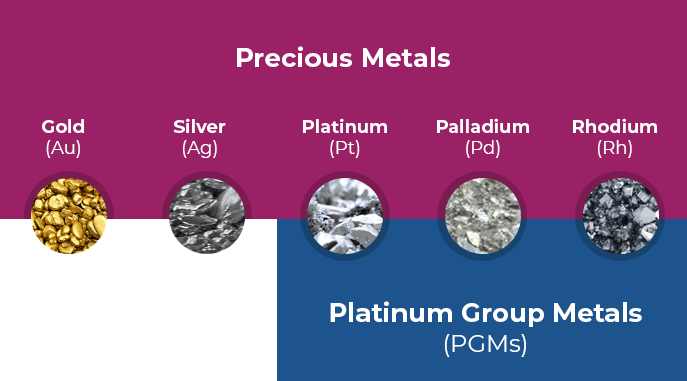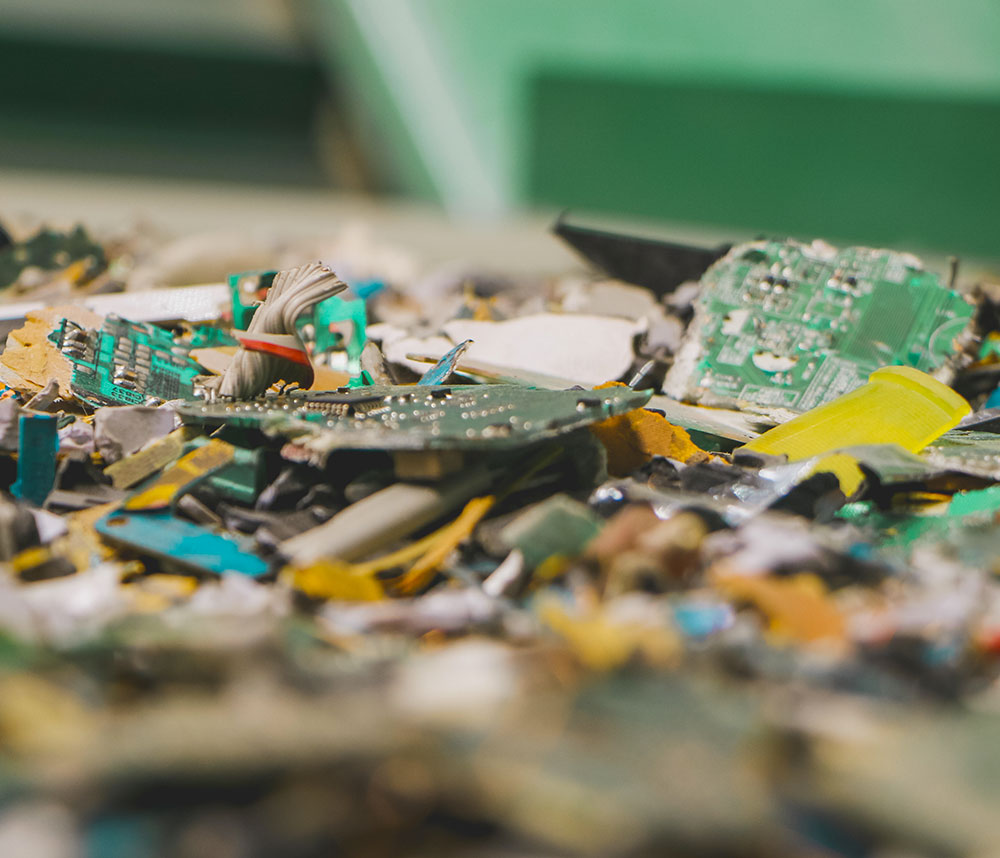Critical raw material sector and EU dependency

Precious Metals and Platinum Group Metals are widely used in a variety of economic sectors in many industrial applications worldwide. Due to their unique properties, such as low corrosiveness, catalytic properties, low electrical resistivity, there are often no alternatives to replace them.
In that context, Europe is the world top consumer of Platinum Group Metals and is becoming highly dependent on imports, which are essential for its economy. For those reasons, the European Commission (EC) has classified them as Critical Raw Materials.
Although Europe is using significant amount of Platinum Group Metals for its production, around 84% of the supply comes from third countries. In addition, gold is mined all over the world, including Europe (principally in Finland, Sweden, Bulgaria, Spain and Greece), but European production accounts for less than 1% of the global primary production. Regarding silver, production statistics are similar, only 7% of the global primary production is coming from Europe (mainly Poland and Sweden).

PEACOC solutions
In Europe there are considerable amounts of end-of-life products containing Precious Metals. These products have vast potential for recycling. However, the current industrial recycling technologies such as smelting or hydrometallurgical processes used by the large recycling companies require high energy consumption and leave negative carbon footprint that harms both the human health and the environment.
In this context, EU-funded project PEACOC aims at solving the current challenges that limit the recovery of Precious Metals at massive scale, while exploiting the vast potential of EU secondary resources. The project will research and demonstrate on a pre-commercial level, novel, effective, low-cost and environmentally friendly technologies for recovering gold, silver and Platinum Group Metals from complex waste mixtures. PEACOC aims at treating end-of-life products in Europe, including spent autocatalysts, low/mid-grade printed circuit board assembly (PCBA) (currently poorly valorised in the EU) and photovoltaic waste.
The project concept is based on previously-developed recovery and refining technologies to TRL5 in the frame of another H2020-funded research and innovation project, PLATIRUS. Some of the selected technologies from the PLATIRUS project, namely Microwave-assisted leaching, Gas-diffusion electrocrystallization (VITO) and Deep eutectic solvents (TECNALIA), for recycling and recovery of Platinum Group Metals will be further scaled up to TRL7 in the PEACOC project. They will be combined with other innovative concentration technologies as well as technologies for the valorisation of the waste that will be produced aiming at nearly zero-waste process.
The PEACOC solutions are expected to be first-of-its-kind in Europe. The innovation concept of the project has been funded with €11.2 million from the EU’s Horizon 2020 Research and Innovation programme. To research, demonstrate and place in the market those new sustainable technologies for recovery of Precious Metals, the project will be run by a consortium of 19 partners from 8 European countries and Turkey.

Objectives
The PEACOC project is designed to provide sustainable and responsible industrial solutions by valorising secondary waste resources in Europe, while reducing the supply risk of Precious Metals. The PEACOC technologies are expected to be economically and environmentally viable and first-of-its-kind across Europe.
Within the PEACOC project, the consortium has set 7 ambitious goals:
- Setting up a new large-and-complete value chain of 19 partners to produce Precious Metals from end-of-life products available in Europe that are not recovered yet and estimated at:
- ~50 t Platinum Group Metals per year from unrecycled spent autocatalysts,
- ~30 t gold per year, ~10 t palladium per year, and ~100 t silver per year from unrecycled end-of-life printed circuit board assembly,
- ~ 720 t of silver expected in 2030 from emerging photovoltaic waste streams in Europe.
- Demonstrating new technologies to address the challenge of effectively and efficiently recovering low grade Precious Metals from complex waste matrices designed with a near zero-waste approach and a true circular economy mindset.
- Developing the first-in-kind pre-commercial compact, mobile and modular refining system at pilot scale with a production capacity of up to 2 kg of Precious Metals per week to expand the business of their recycling across Europe. Thus, allowing SMEs to exploit the recycling of end-of-life products and untapped resources.
- Designing and produce novel equipment at pre-commercial scale for Precious Metals refining by European SMEs.
- Easing the decision for investment in new production plants as potential investors will be able to lease and test the PEACOC solution at pre-commercial scale, without the need for prior large investments.
- Supporting the European Commission in reaching the ambitious energy and climate targets stated in the Green Deal. By demonstrating the use of recovered Precious Metals as catalysts for reducing emissions and for clean energy generation, it will minimize environmental impacts and risks, and gain the trust of the European communities in the raw materials sector.
- Promoting sustainability by developing valorisation and up-cycling strategies for all by-product associated with the recovery of Precious Metals.
Impacts
The PEACOC project is expected to generate unique know-how. This is the first time that novel refining technologies will be constructed at pre-commercial pilot scale and integrated together with existing processes and pilot technologies across the EU. Thus, demonstrating the low-cost recovery of Precious Metals from a wide range of end-of-life products, that is a full value chain from waste to innovative products. The PEACOC pre-commercial pilot will present a true technology transfer from the R&D stage to marketable products.
Therefore, the PEACOC technologies are designed to have technological, economic and societal impacts for the European communities. The PEACOC processes are projected to drastically reduce the supply risk of Precious Metals for the European industry. Thus, enabling new business opportunities for SMEs working with recycling of end-of-life products and consolidating the position of large industries (i.e., recycling companies, refineries, automotive, metallurgy).

- Significantly improve the economic viability and market potential of Precious Metals recycling. This will be gained through the pilot-scale process, leading to expanding the business across Europe.
- Increase the health, safety and environmental performance of the Precious Metals recycling process aiming to reach secure and sustainable access and exploitation of Precious Metals from end-of-life products.
- Produce Precious Metals at a profit margin up to 80% compared to current Precious Metals market prices.
- Unlock a significant volume of various secondary raw materials currently unexploited/underexploited across Europe.
- Create new job opportunities in raw materials production and equipment manufacturing.
 This
project has received funding from the European Union’s
Horizon 2020 research and innovation programme under grant
agreement No 958302.
This
project has received funding from the European Union’s
Horizon 2020 research and innovation programme under grant
agreement No 958302.